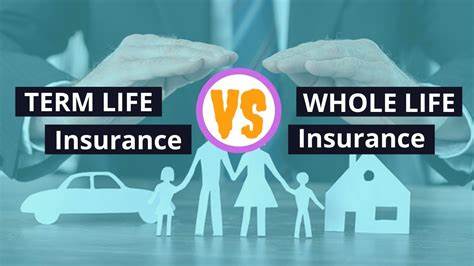Decoding Term Life vs. Whole Life Insurance

Last Updated on by Daniel Lawrence
Insurance is a critical aspect of financial planning, providing a safety net for your loved ones in times of need. Two popular choices in the insurance landscape are Term Life and Whole Life insurance. Understanding the differences between these two options is crucial for making an informed decision that aligns with your financial goals and priorities.
Term Life Insurance

Term Life Insurance is often considered the more straightforward and cost-effective option. It provides coverage for a specific term, typically ranging from 10 to 30 years. If the policyholder passes away during the term, the beneficiaries receive the death benefit. Here are some key features of Term Life Insurance:
- Affordability: Term life insurance tends to be more affordable than whole life insurance, making it an attractive option for those looking for basic coverage without breaking the bank.
- Flexibility: It’s flexible in terms of coverage duration. You can choose a term that aligns with specific financial responsibilities, such as paying off a mortgage or ensuring your children’s education.
- Pure Death Benefit: Term life insurance focuses solely on providing a death benefit to beneficiaries, without accumulating cash value over time.
Whole Life Insurance

Whole Life Insurance, on the other hand, is a permanent life insurance option that provides coverage for the entire lifetime of the policyholder. Here are some key features of Whole Life Insurance:
- Lifetime Coverage: Whole life insurance offers coverage until the policyholder’s death, providing a sense of security for the insured and their beneficiaries.
- Cash Value Accumulation: A unique feature of whole life insurance is the cash value component, which accumulates over time and can be accessed by the policyholder. This cash value can be used for various purposes, such as borrowing against the policy or supplementing retirement income.
- Premiums Remain Constant: Unlike term life insurance, whole life insurance typically has fixed premiums that remain constant throughout the life of the policy, providing predictability for long-term financial planning.
Choosing the Right Option:
The decision between term life and whole life insurance depends on your specific needs, financial goals, and circumstances. Here are some factors to consider:
- Budget: If affordability is a primary concern, term life insurance may be the better choice initially. It allows you to secure essential coverage during specific high-risk periods.
- Long-Term Planning: If you are looking for lifelong coverage and the ability to accumulate cash value, whole life insurance may be more suitable. It serves not only as a safety net but also as a long-term financial asset.
- Financial Goals: Consider your broader financial goals. If you prioritize building wealth and having access to cash value, whole life insurance aligns more closely with those objectives.
Conclusion
In the realm of life insurance, the choice between term life and whole life insurance boils down to individual preferences, financial goals, and budget constraints. Both options serve unique purposes, providing valuable protection for policyholders and their loved ones. Assessing your needs and consulting with a financial advisor can help you make an informed decision that aligns with your long-term financial plan.